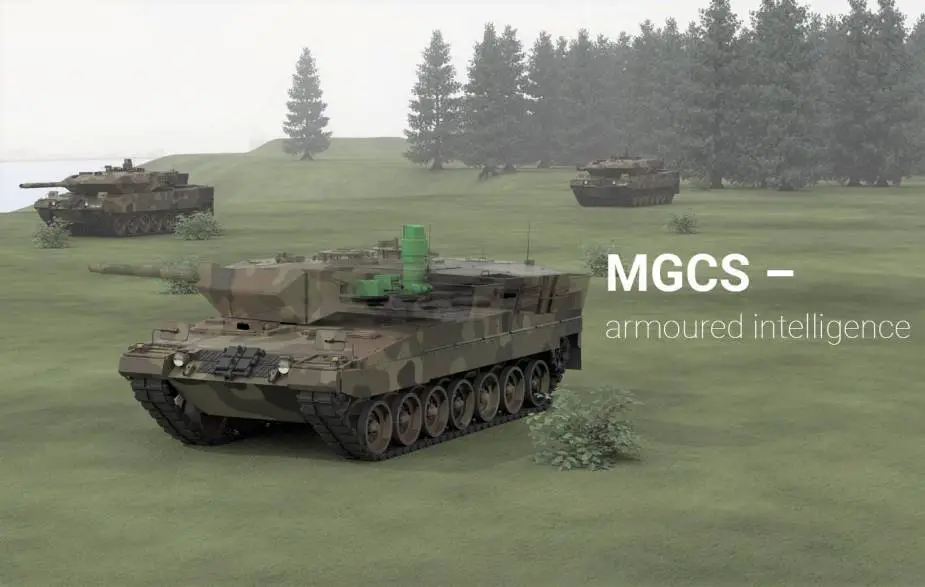Together, France and Germany strive for a new generation of armoured vehicles: the Main Ground Combat System (MGCS). MGCS is the Main Battle Tank and intelligently networked ground combat centre of the future, to be created by 2035 in a Franco-German cooperation. Hensoldt can support the project with networked electronic, sensory and optronics systems.
Follow Army Recognition on Google News at this link

Hensoldt knows that a smart network of sensors will be a real game changer for ground-based combat (Picture source: Hensoldt)
In this context, Hensoldt knows that a smart network of sensors will be a real game changer for ground-based combat. As proven expert and partner for optronics, radars, avionics and spectrum dominance, Hensoldt develops its own vision for MGCS. The biggest opportunity for the German-French project lies in the user-oriented analysis of heterogeneous information generated by different sensors within one single system. With such a smart network supported by artificial intelligence (AI), we deliver automated and detailed battlefield data, which allows a real-time reaction.
Hensoldt's vision is the key technology for a decision-based combat management. Because whoever gains an informational advantage by the intelligent fusion of data also gains decision-making superiority. And at last, faster and more efficient decisions lead to dominance on the battlefield.
MGCS, a game changer
To remind the background of this program, the Leopard 2 and Leclerc MBTs must be replaced by 2035. So, Germany and France launched the joint MGCS project in 2012 with the project divided into five major phases: 1) operational needs analysis; 2) concept survey; 3) development and technological capability demonstration; 4) integration and system demonstration; 5) system production. The first two phases have already been successfully completed though, a bi-nationally coordinated prioritization of the individual requirements (High-Level Requirements) remains to be set up. of scale and would strongly enhance interoperability between armed forces.
On April 28, 2020, Germany and France at last signed a framework agreement defining the project organization and management structures of the heavy land combat system’s architecture. “The MGCS project to be implemented under German leadership is to replace the German Leopard 2 and the French Leclerc from the mid-2030s. With this project, Germany and France are sending an important signal for European cooperation in defense policy,” the German Defense Ministry said.
“Defence Minister Annegret Kramp-Karrenbauer and her French counterpart Florence Parly have signed a Framework Agreement, in which project organization and management structures are laid down. Due to the Corona situation, the ministers were unable to meet for joint signing,” the German Defense Ministry said.
“Both countries should benefit equally from the cooperation, which is why the contracts to be concluded are based on a 50% financing between Germany and France. In addition, both nations are to receive sufficient intellectual property rights for the intended future use of the work results,” writes the Ministries of Defense regarding the contents of the agreement. “The ministers have therefore also signed an Implementing Arrangement 1, which forms the basis for commissioning a system architecture definition study. Only recently, the Budget Committee of the German Bundestag cleared the way for commissioning this two-year study. Again, Germany and France share the costs. The system architecture is a prerequisite for the development of a technology demonstrator with which the German and French requirements for the MGCS can be verified.”
The three manufacturers concerned are Nexter for France, Rheinmetall and KMW (Krauss -Maffei - Wegmann) for Germany.














